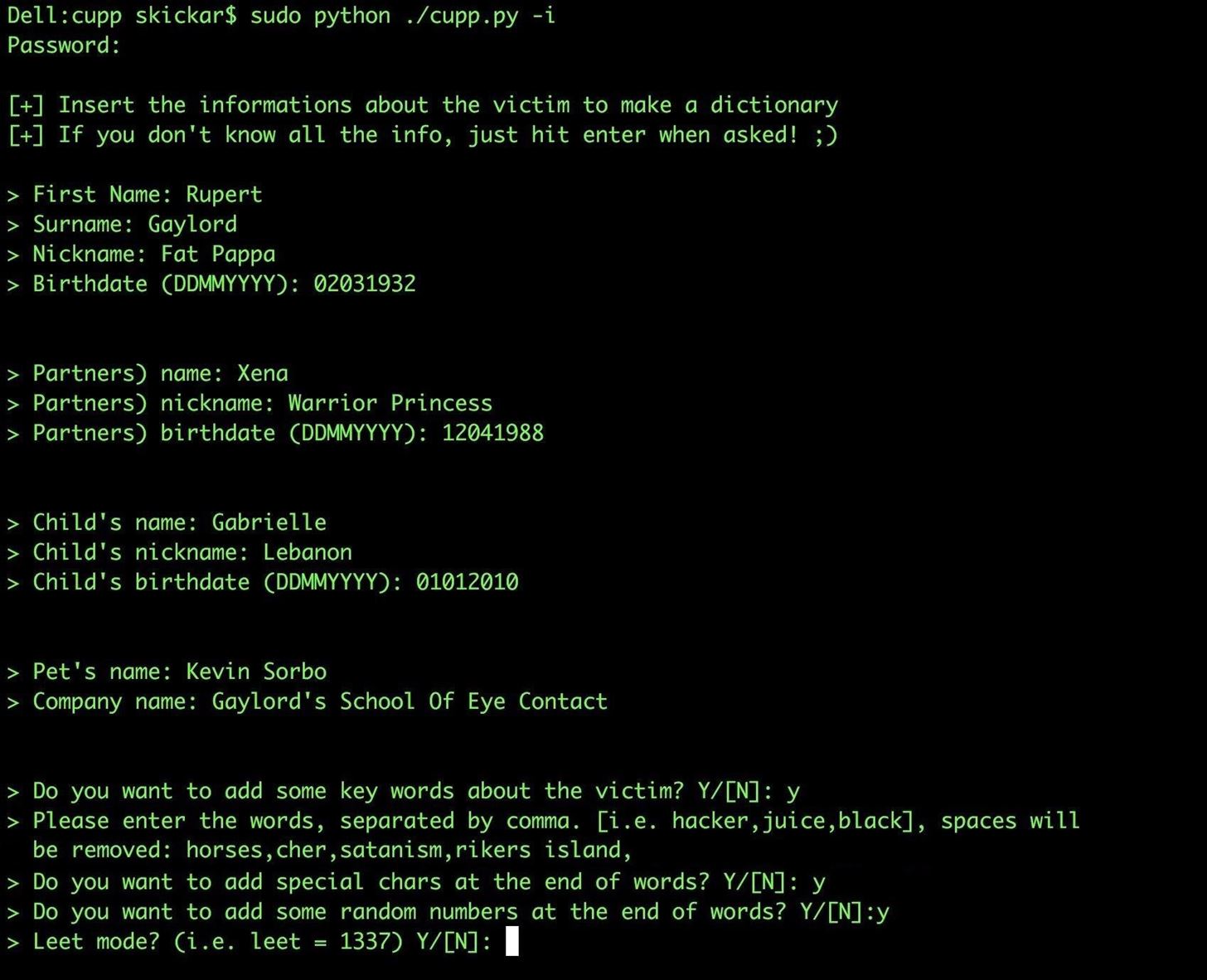

Hashcat -m 1000 -a 3 hashes\users.txt ?u?l?l?l?l?l?d?d Hashcat -m 1000 -a 3 hashes\users.txt ?u?l?l?l?l?d?d?d Hashcat -m 1000 -a 3 hashes\users.txt ?u?l?l?l?d?d?d?d Hashcat -m 1000 -a 3 hashes\users.txt ?u?l?l?l?s?d?d?d Hashcat -m 1000 -a 3 hashes\users.txt ?u?l?l?l?l?s?d?d Some of my favorite masking attack commands to run: hashcat -m 1000 -a 3 hashes\users.txt ?u?l?l?l?s?d?d?d?d Hashcat -force list.txt -r /usr/share/hashcat/rules/le -r /usr/share/hashcat/rules/le -r /usr/share/hashcat/rules/append_le -r /usr/share/hashcat/rules/append_le -stdout | sort -u > list-uniq.txt One of my favorite commands for creating wordlists: This time when we check the number of words in the list, we see exactly double what we had before! This is because the list has the same 308 words as last time, but now also has them all with an exclamation added. Hashcat -force -r append_le -r /usr/share/hashcat/rules/le -stdout | sort -u > hashcat_words.txt Just keep in mind that you may get duplicates, so you may want to also add the sort -u command. Now we can run hashcat again, but this time we’ll specify both rules instead of just the one. To fix this, we can create our own custom rule called append_le that contains the following: You can see from the screenshot that we turned our list that previously contained 4 words into a list that now contains 308 words! But if you look through the list, you’ll see it doesn’t contain any symbols. Hashcat -force -r /usr/share/hashcat/rules/le -stdout > hashcat_words.txt Now we’ll take this list, and feed it through Hashcat’s Best64 rule. There are dozens of ways to do this, but a simple method is to use a for loop.įor i in $(cat list1.txt) do echo $i echo $2021 done > t We should also append the current year to the words.

In a real engagement, you may want to gather 10-20 words to use. We’re only going to start with a few words, as our list is going to grow exponentially when we start applying rules to them. Let’s begin by creating a handful of words that would be likely for this domain. In our fictional scenario, we’ll be targeting an Active Directory domain named NBA.local. To start, let’s begin with setting the scenario up. This post intends to serve as a quick guide for leveraging Hashcat rules to help you build effective custom wordlists.
#Wordlist generator online password
When on an engagement, it is common to need a custom wordlists for either Password Spraying, or Password Cracking when you have captured some hashes.


 0 kommentar(er)
0 kommentar(er)
